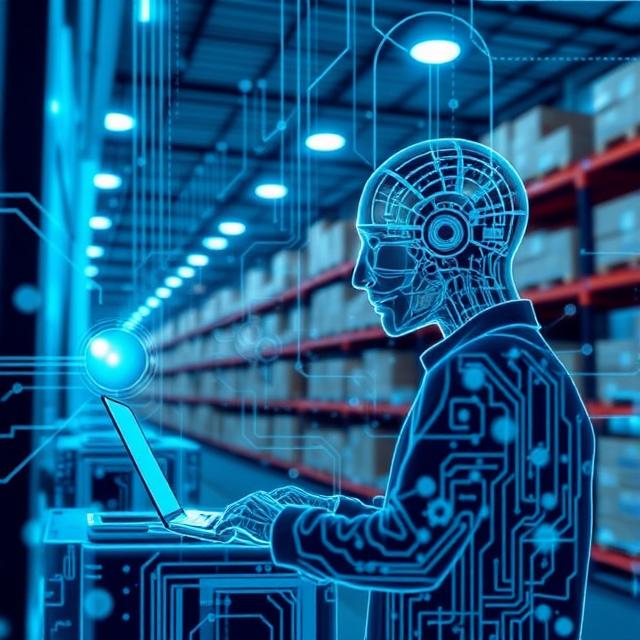Transforming Operations Through Intelligent Twins
Digital transformation has become a cornerstone of competitive advantage in modern industries. The most disruptive of these technologies are Digital Twins, now getting supercharged with machine learning optimization in every node of the supply chain. With growing complexity in global operations, integrating digital twins machine learning promises real-time insights, predictive analytics, and efficient resource management, which traditional models cannot.
Understanding Digital Twins in Context
At its simplest, a digital twin is a virtual replication of a physical asset, system, or process. For supply chains, this might be creating a model of an entire logistics network, warehouse operations, or even just the flow of materials from raw sourcing to delivery. It only replicates real-world behaviors to allow decision-makers to simulate, monitor, and even control operations in a virtual environment.
The integration of digital twins in supply chains provides visibility across different touchpoints. So whether you want to monitor temperature-sensitive products, manage fleet performance, or detect bottlenecks in delivery systems, you can have a view of the entire picture. But that doesn’t scratch the surface of how powerful this combination gets when it is mixed with machine learning.
The Role of Machine Learning in Predictive Analytics
Machine learning algorithms allow digital twins to be more than just simulators. They won’t just react to things happening; they understand the pattern background and are able to predict what is to be expected. For instance, a digital twin of a warehouse empowered by machine learning will, among other functions, forecast inventory shortages, predict peak demand periods, or recognize underutilized spaces in storage.
With historical data and inputs in real-time, those algorithms allow digital twins machine learning systems to go further in recommending corrective actions, automating the workflow, and even self-adjusting according to expected outcomes. This is just a fraction of being able to “learn” and “adapt,” allowing for significant breakthroughs in adaptability and resilience in supply chains.
To this point, machine learning has increased anomaly detection. In a supply chain context, small kinks, such as shipment delays or equipment failure, can explode into great losses. Digital twins as a result of machine learning can pinpoint these anomalies and even propose remedial action early on, rather than waiting for the trouble to ignite into flames.
Improving Efficiency and Reducing Costs
The simple application of the digital twins in supply chains will lead to great cuts in cost and waste. An example involves manufacturing, where a digital twin of the production line detects areas where resources are overweight, where machines require maintenance, and how employee scheduling can be optimized.
Supply chains are equally exposed to happenings beyond their walls, be it weather changes, geopolitical events, or fuel prices. Digital twins machine learning platforms would process that much global data and indicate relevant dynamic rerouting of shipments, other suppliers, or cheaper modes of transport.
All this leads to improvement in delivery timelines, smaller carbon footprints, and added customer satisfaction – all absolutely necessary for achieving the competitive edge in today’s fast-paced markets.

How Digital Twins Use Machine Learning in Supply Chains
Collaboration and Real-time Decision Making
One significant advantage of having digital twins in supply chains is the enhanced collaboration. With cloud-based platforms, stakeholders from different locations automatically access the same twin model, hence clear, data-driven decisions devoid of delays. Adding machine learning customized dashboards and alerts for different roles helps further this.
For example., alerts for vendor risk to procurement teams, forecasts on delivery delays to logistics managers-this personalized way of communicating will break silos and enhance collective action.
Scalability and Future Readiness
While the supply chain increases complexity with every technology, digital twins machine learning solutions have no match in terms of scale. Be it from tracking a single asset to monitoring a global network, these systems grow in complexity without fail but are still responsive and accurate.
They are also future-ready. With the increasing development of IoT, blockchain, and 5G, even richer data feeding digital twins is coming into the fold, better sharpening machine learning outcomes. Therefore, firms adopting these platforms today most assuredly prepare for the unpredictable future with agility and precision.
Digital twins machine learning systems are transforming digital twins in supply chains by improving visibility, efficiency, and decision making in real-time.
The Future of AI-Generated Journalism and Social Media Content



